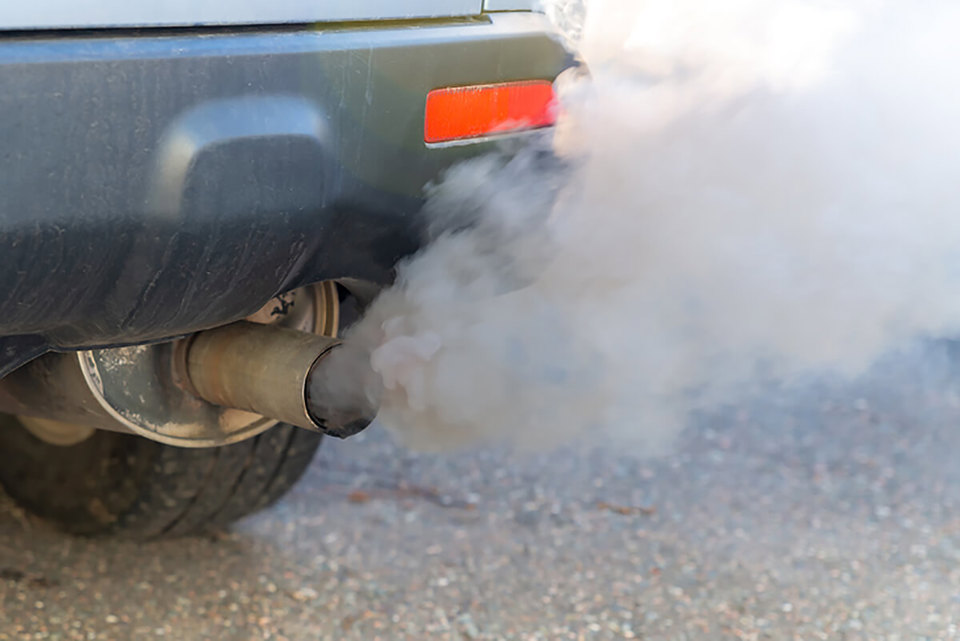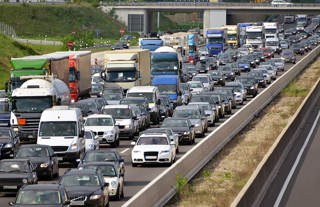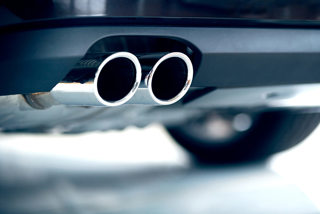The Government has widened its focus on emissions, with the publication of its Clean Air Strategy, saying transport is only ‘partly’ to blame for pollution.
It says that domestic burning on stoves and open fires is now the single biggest source of particulate matter emissions.
In fact, average levels of nitrogen dioxide at the roadside are at their lowest level since the Government first started to collect these statistics.
Emissions of nitrogen oxides fell by 27% between 2010 and 2016 and are also at their lowest level since records began.
Launching the Clean Air Strategy today (Monday, January 14), environment secretary Michael Gove said: “While air pollution may conjure images of traffic jams and exhaust fumes, transport is only one part of the story and the new strategy sets out the important role all of us - across all sectors of work and society - can play in reducing emissions and cleaning up our air to protect our health.”
He continued: “Our ambitious strategy includes new targets, new powers for local government and confirms that our forthcoming Environment Bill will include new primary legislation on air quality.”
As part of the new strategy, the Government says that it will introduce new legislation to prohibit the sale of the most polluting fuels and ensure that only the cleanest wood burning stoves are available for sale by 2022.
It says that it will also continue to explore how we can give local authorities powers to increase the rate of upgrades of inefficient and polluting heating appliances and bring existing smoke control legislation up to date, and make it easier to enforce.
Furthermore, the Department for Environment, Food and Rural Affairs (DEFRA) says it will take action to reduce air pollution from agriculture, which is responsible for 88% of ammonia emissions.
The strategy says that here will be support for farmers to invest in infrastructure and equipment to reduce emissions, and the introduction of regulations to require farmers to use low emission farming techniques and to minimise pollution from fertiliser use.
It does acknowledge, however, that the Government’s most immediate air quality challenge is to bring roadside concentrations of nitrogen oxides within legal limits in the shortest possible time. Road transport is responsible for some 80% of NOx concentrations at the roadside.
The UK Plan for Tackling Roadside Nitrogen Dioxide Concentrations, published in 2017 and supplemented in 2018, identifies those local authorities in England which have been directed to develop plans to bring roadside concentrations of nitrogen dioxide within legal limits in the shortest possible time.
It also sets out the measures that the Mayor of London and devolved administrations are taking forward. The government is providing extensive guidance for the local authorities required to develop local plans, including the Clean Air Zone (CAZ) framework for England published in 2017, and is supporting them individually as they develop their plans.
This includes committing a £275 million Implementation Fund to enable local authorities to take the necessary action to improve air quality, and a £220m Clean Air Fund to help them to minimise the impact of their local plans on individuals and businesses.
In July 2018, it published its plan for the transition to zero emission road transport - the Road to Zero.
Its mission is for all new cars and vans to be effectively zero emission by 2040 by ending the sale of new conventional petrol and diesel cars and vans by 2040.
By then, it says it expects the majority of new cars and vans sold to be 100% zero emission and all new cars and vans to have significant zero emission capability.
By 2050 it wants almost every car and van to be zero emission and wants to see at least 50%, and as many as 70%, of new car sales and up to 40% of new van sales being ultra-low emission by 2030.
It says in the strategy that it expects this transition to be industry and consumer led, supported in the coming years by the measures set out in the Road to Zero. It will review progress towards its ambitions by 2025.
But, Polly Billington, director of UK100, said: “Plans in the Clean Air Strategy will fail unless there are strong new protections in law to clean up our air as we leave the EU and sufficient financial support to make the changes a reality.
“Local leaders have consistently stated that Clean Air funding committed by Government to tackle air pollution is simply inadequate on three fronts: not enough funding for those local authority areas that Government has identified as having the most severe air quality challenges, insufficient funding available for tackling the wider sources of air pollution and limited financial support for national measures.”
Jenifer Baxter, head of engineering at the Institution of Mechanical Engineers, labelled the Clean Air Strategy as a "missed opportunity" to provide greater clarity on how monitoring equipment and systems could be developed in order to inform decision making.
"With just 271 air quality monitoring stations throughout the UK, this strategy was an opportunity to improve our understanding of emissions, both across different sectors and the UK, and air pollution's role in contributing to nearly 40,000 early deaths a year," she said.
“We need legally binding commitments, particularly for transport and energy systems, that could help improve the quality of the air we breathe across the UK.
"Local authorities have already been given responsibility for tackling roadside nitrogen dioxide concentrations, but we need to be making a determined effort to deal with transport emissions more broadly.
“We called for a Clean Air Act in our A Breath of Fresh Air report, where we outlined our need for coherent and consistent monitoring of transport emissions, so informed targets can be set. We recommended incentives for freight deliveries outside peak hours and highlighted the potential to retrofit diesel trains to cut emissions while trains are standing at platforms.
“The Institution went further in our Energy from Gas report, and identified the possibilities for hydrogen that can be used in all areas of our energy system producing a low particulate and low greenhouse gas emissions fuel for transport, reducing the CO2 emissions from our heating systems, reused to generate electricity as well as providing a greener feedstock for industries such as ammonia and plastics production.
“Monitoring the UK’s emissions more effectively would provide better evidence and help us decide on the best solutions for our communities. In particular, we would like to see the Department for Environment, Food & Rural Affairs work with the Department for Transport to introduce emission monitoring equipment across our transport network along with real-time on-vehicle monitoring.”
Claire Haigh, chief executive of Greener Journeys, also belives the new strategy is a missed opportunity. "Until there are fewer cars and vans on our roads we will not be able to make meaningful progress," she said.
“Congestion is the biggest cause of roadside air pollution, and reducing the number of cars and vans on our roads is the only solution. A fully loaded double decker bus can take 75 cars off the road, and the latest generation of clean buses are cleaner than most modern diesel cars despite having 15 to 20 times the capacity."
She continued: “The strategy lays out plans to end the sale of conventional petrol and diesel cars by 2040, but immediate action is needed to ensure drivers are persuaded to change their habits now. To begin with, the Government should end the freeze in fuel duty which has led to a 4% increase in traffic since 2011.”
The publication of the Clean Air Strategy comes after the Government rejected calls to bring forward the ban on diesel and petrol vehicles.
MPs on the Business, Energy and Industrial Strategy (BEIS) Committee had urged the Government to move the ban forward in light of the Intergovernmental Panel on Climate Change’s (IPCC) report on global warming.
However, in a response to MPs last week, it said that the 2040 date will remain in place until at least 2025, when the Government will review progress made towards a low-carbon automobile sector and “consider what interventions are required if not enough progress is being made”.
Ian Johnston, CEO of Engenie, said: "By rejecting calls to bring the petrol and diesel ban forward from 2040 to 2032, the Government has failed to set a timeline for the transition to low-emission vehicles that prioritises the health of its citizens.”
He also said that the Clean Air Strategy "stops short" of offering any meaningful new policy to tackle one of the biggest sources of air pollution – road transport.
The Government will shortly bring forward an Environment (Principles and Governance) Bill which will include primary legislation on air quality, last updated in the Clean Air Act of 1993.
For more information on clean air zones and where they are planned, click here.























Login to comment
Comments
No comments have been made yet.